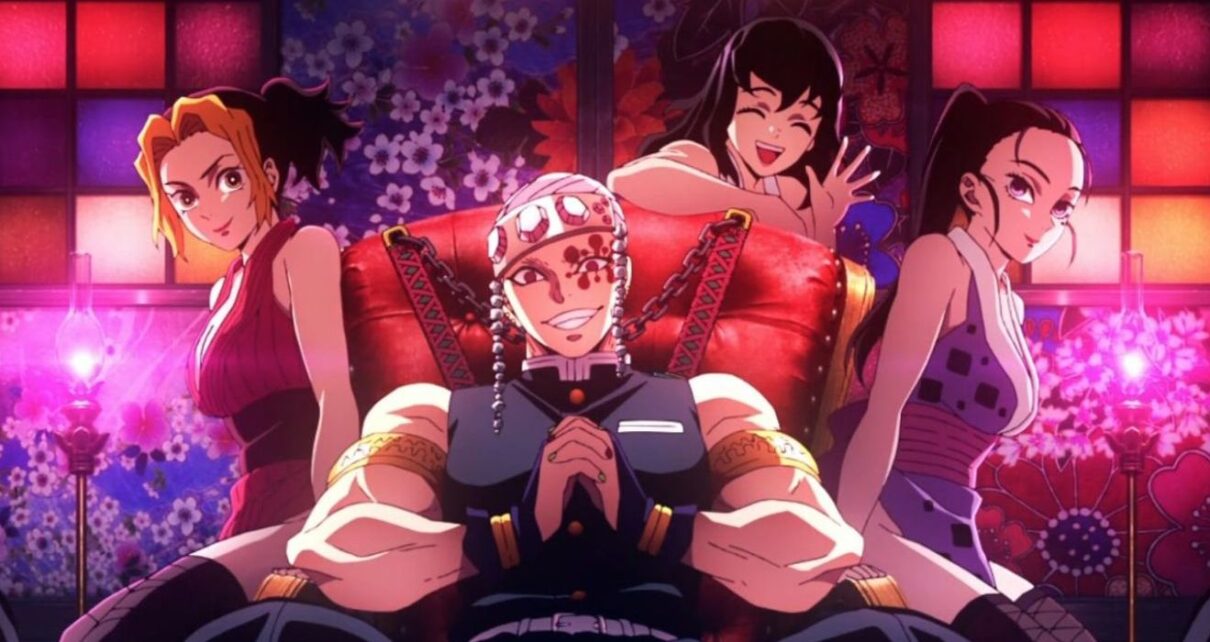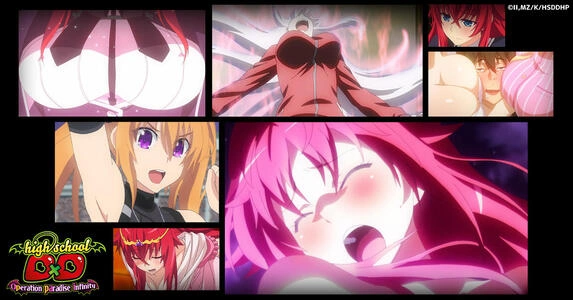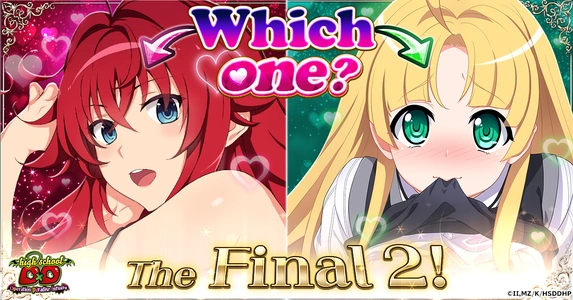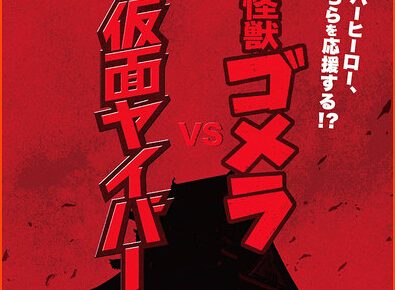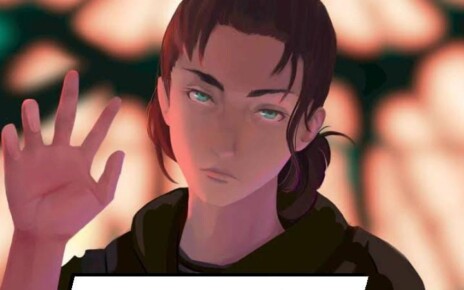Table of Contents
Summary
- Tengen Uzui’s polyamorous relationship with his three wives is a product of his shinobi family’s outdated customs and traditions.
- Despite the potentially problematic aspects, Demon Slayer depicts Tengen’s relationship with his wives in a way that shows respect, equality, and mutual trust.
- Tengen’s wives, Suma, Makio, and Hinatsuru, are fully fleshed-out supporting characters with distinct personalities and important roles in Tengen’s life and the story.
Making his anime debut in Demon Slayer‘s “Entertainment District Arc,” Tengen Uzui stands out from other characters with his unique,cosplay-worthy design and cool Nichirin Cleavers. Furthermore, to Tanjiro, Inosuke and Zenitsu’s surprise, the Sound Hashira has three incredibly beautiful wives. At the end of Season 2, Episode 12, there’s a short scene that explains why Tengen has three wives, a trio of kunoichi named Makio, Suma and Hinatsuru.
Tanjiro tells the audience that Tengen’s family practices polygamy, the custom of having more than one spouse at a time. Supposedly, at the age of 15, the head of the family picks out three compatible wives for their son, but that’s not always the case. In Tengen’s situation, his wife Suma initially approached him, instead of being chosen by his father. Overall, while the subplot of three Tengen Uzui wives may seem problematic, the story of Tengen and his wives is actually an uplifting one that flatters all four characters.
Is Demon Slayer’s Depiction of Tengen’s Wives Problematic
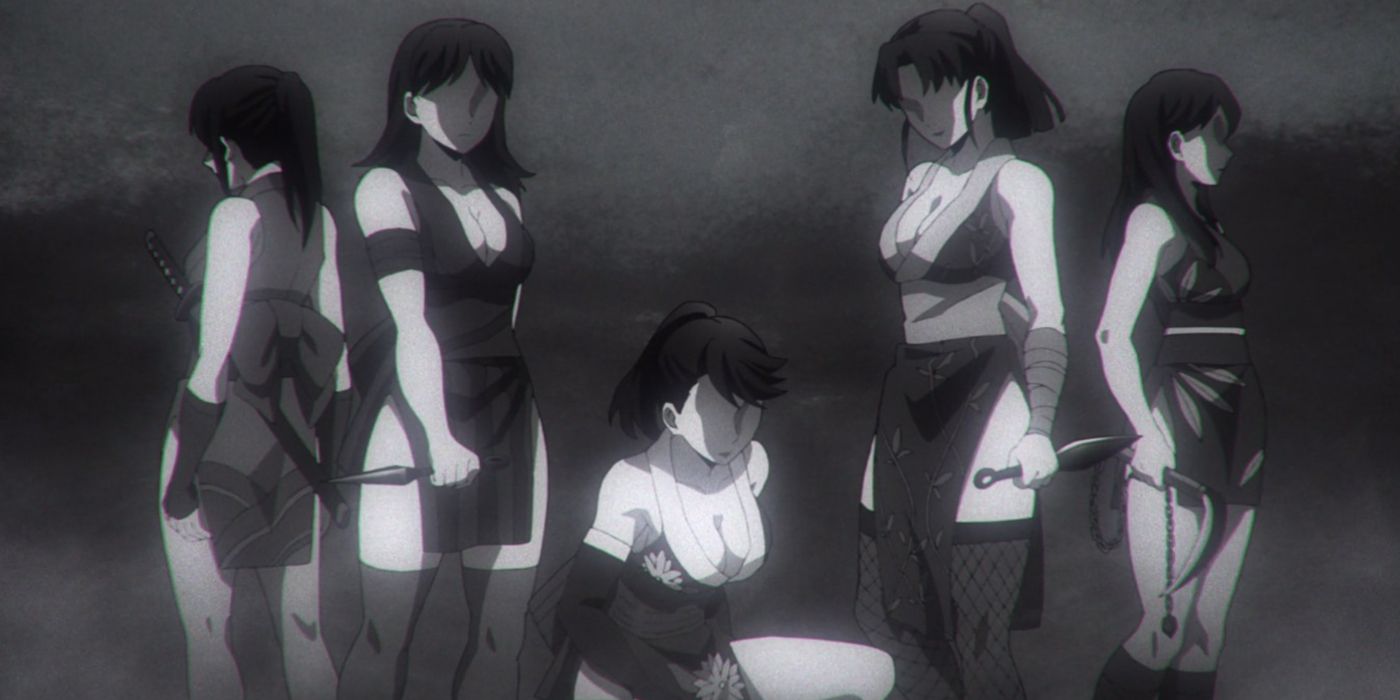
Demon Slayer: Kimsetsu no Yaiba takes place during Japan’s Taisho period, which spanned from 1912 to 1926. Tengen Uzui also grew up in a shinobi family — that is, a family of ninjas. Following centuries of family tradition, Tengen’s shinobi family may have held onto some customs that became outdated. In the main story, Japan is rapidly modernizing, adapting new technology and new ideas, even shotguns in Genya’s case.
But other groups are far removed from modern cities like Tokyo, such as Tengen’s shinobi clan, so those ninjas cling to pragmatic, centuries-old traditions. Those traditions evidently include inequality among men and women, with kunoichi being little more than assistants for the male ninjas and child-bearers. Ninjas often die during their missions, so men like Tengen are expected to regularly produce heirs, and women like Suma, Makio, and Hinatsuru are expected to do their part, too.
In Demon Slayer‘s lore, there may be practical reasons why the reclusive ninja clans use such arrangements, meaning Tengen’s polyamorous group is a product of its time and place. Still, “They’re a product of their time” isn’t always a free pass to depict things that may offend modern viewers’ sensibilities.
There’s a storytelling responsibility to reconcile “That’s just how it was back then” with what modern people and society believe and accept, and things like polyamory or subordinate women must be either portrayed carefully and smartly, or not at all. If such things are portrayed too bluntly, without modern sensibilities in mind, it may feel like regression, almost like someone is longing for “The good old days,” days that were only good for their demographic.
On that topic, bringing a polygamous relationship like Tengen’s into a contemporary anime has its risks. The wives are kunoichi (female ninjas), yet they are presented in lewd ways, with revealing outfits that undermine any physical abilities they possess.
Some may even call the depiction an affront to modern feminism in that it places Tengen as the one in charge, and indicates a power dynamic that falls in the male’s favor. Of course, shonen anime is geared toward primarily young viewers — and the way Tengen’s wives are shown could be harmful if handled incorrectly.
Demon Slayer’s Characters Defy Regressive Norms About Women
Fortunately, the Demon Slayer anime does far more than just “That’s how it was back then” concerning polyamory and women’s lower standing in society at the time. There are moments where they are more well-portrayed. Early in Season 2, Tengen describes his wives with respect and admiration that is shared equally among the three of them.
During Season 2, Episode 12, there’s a flashback in which Makio remembers what Tengen tells them before he sends them into the entertainment district: Place their lives before the mission, because they are his number one priority, above even innocent citizens. The anime is also beginning to display more of what Tengen’s wives are made of: They can stand on their own, without the need for any man.
The polyamorous relationship on display in Demon Slayer is not quite a perfect representation. Nevertheless, it is portrayed with as much grace as a shonen anime can muster. It tries to give the women respect, despite their revealing outfits. And it frames their relationship with Tengen as entirely equal, and fulfilling.
At times, their three-way marriage almost seems wholesome. Tengen sees his wives as the warriors that they are — and as a shinobi, he should be the best judge of all. The idea is that Tengen Uzui and his associates are historical characters with relatively modern sensibilities, but not to the point of being a preachy mouthpiece for any modern group or person, not even Demon Slayer‘s creator, Koyoharu Gotouge.
The trick is to have characters like Tengen used to such regressive norms while deciding to question them for honest and practical reasons. Of course, any anime character in a modern setting would hotly object to these customs if they got isekai’d back in time.
It’s something special for a man of the time, Tengen Uzui, to also protest the unfair system. He knows his ninja clan’s rigid traditions, and why they exist, but he also sees ways to improve that system in humanistic ways. He’s not naive enough to be shocked at women being treated like tools, but he still has a more positive alternative.
Tengen saw his three wives as trusted partners and equals, three human beings with their own emotions, needs, and fears. That fostered a great deal of mutual respect and trust among the four of them, far more so than three kunoichi merely doing their duty as a male ninja’s assistants and child-bearers.
It also flattered protagonist Tanjiro Kamado that he never found any of this unusual, either, and neither did Inosuke or Zenitsu. Tanjiro immediately accepted the fair dynamic between Tengen and his three wives, perhaps because Tanjiro was already used to seeing women like his mother Kie and his sister Nezuko being highly competent, supportive people who didn’t need — or want — a man to boss them around. The Kamados treated women well, so Tanjiro simply saw more of the same with Tengen and his trio of kunoichi wives.
Suma, Makio, & Hinatsuru Are Fully Fleshed-Out Supporting Characters in Demon Slayer
Given their position as supporting characters, Suma, Makio, and Hinatsuru get adequate screen time in Demon Slayer‘s anime, complete with worthwhile details about their personalities and backstories. Characters like them cannot get extensive flashbacks like actual shonen protagonists, but as supporting characters, they get enough.
The flashback sequences showed what Suma, Makio, and Hinatsuru really thought of Tengen as a person, and their healthy, emotional bond of friendship and trust with him made them far more than token eye candy or filler in the anime.
No matter their curvy figures or moderately provocative outfits, those three kunoichi were proper fighters and an important part of Tengen’s life, being far more than duty-bound assistants or child-bearers. They still served in their overall duty, but they and Tengen also fought back against the regressive system without going completely rogue. They built a better system for themselves within the framework.
On an even more personal note, Suma, Makio, and Hinatsuru all have distinct personalities anytime they are not too busy helping Tengen fight the likes of Daki and Gyutaro. Amusingly, the three kunoichi actually mirrored Demon Slayer‘s main trio, perhaps not in appearance or combat techniques, but definitely in personality.
Tanjiro, Zenitsu, and Inosuke play off each other well because of their differing personalities, with Tanjiro being the kind, responsible big-brother type, while Zenitsu is prone to loud worrying or complaining and Inosuke is the competitive brute. Makio is a slightly tamer Inosuke, having a bold, fierce personality and even slapping or berating Suma comically when the latter complains or worries. And it’s Suma who reflects Zenitsu’s habit of loudly worrying about everything with her exaggerated reactions, much to Makio’s annoyance. That leaves Hinatsuru as the kunoichi version of Tanjiro, being a responsible, emotionally stable big-sister type.
For now, in the Demon Slayer anime, fans might not see much more of what makes Suma, Makio, and Hinatsuru tick, given their total absence in the Swordsmith Village story arc and low odds they will also appear in the Hashira training arc, either.
Still, Demon Slayer made many fascinating statements about Tengen’s three wives in a short time frame, establishing Tengen and his kunoichi wives as a forward-thinking squad of good friends/spouses who fight for shonen values like trust, respect, and honor. Suma, Makio, and Hinatsuru made a strong impression as relatively modern action heroines with hearts of gold with fun personal dynamics, giving Demon Slayer fans yet more hope that the anime will treat them to even more heroines like them going forward.
